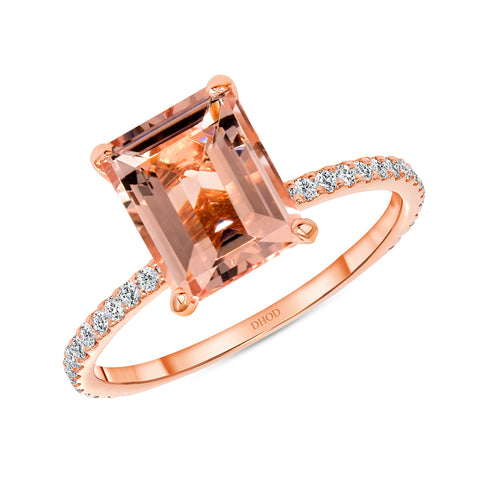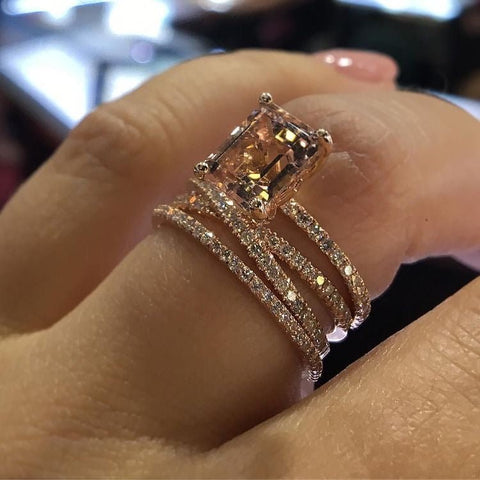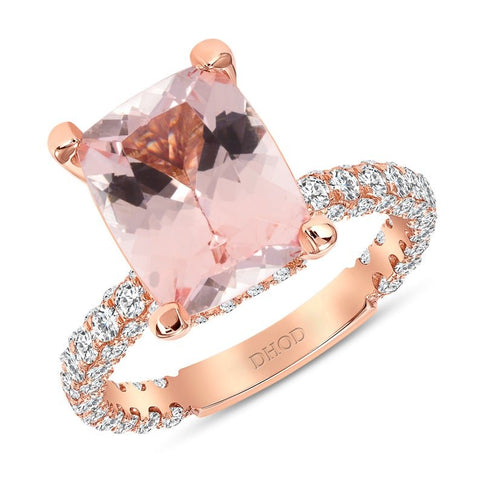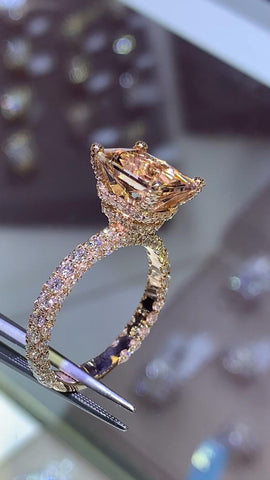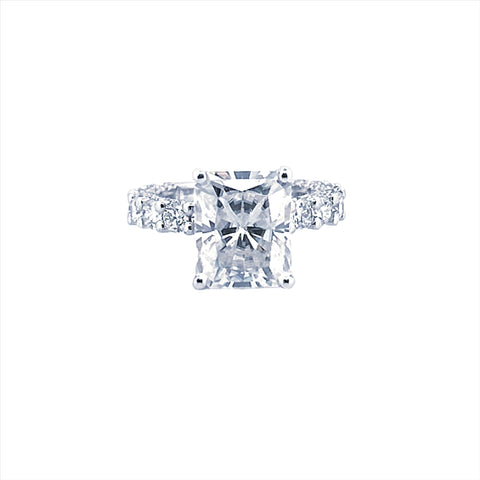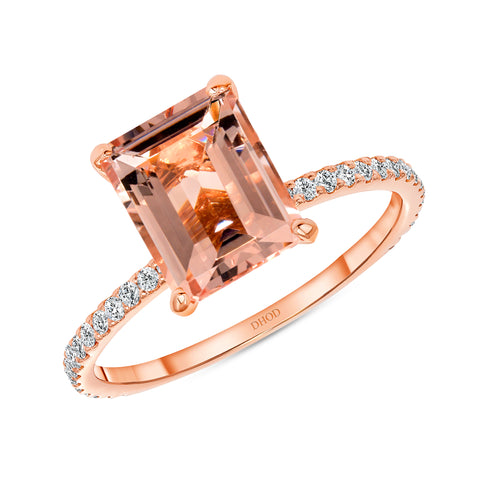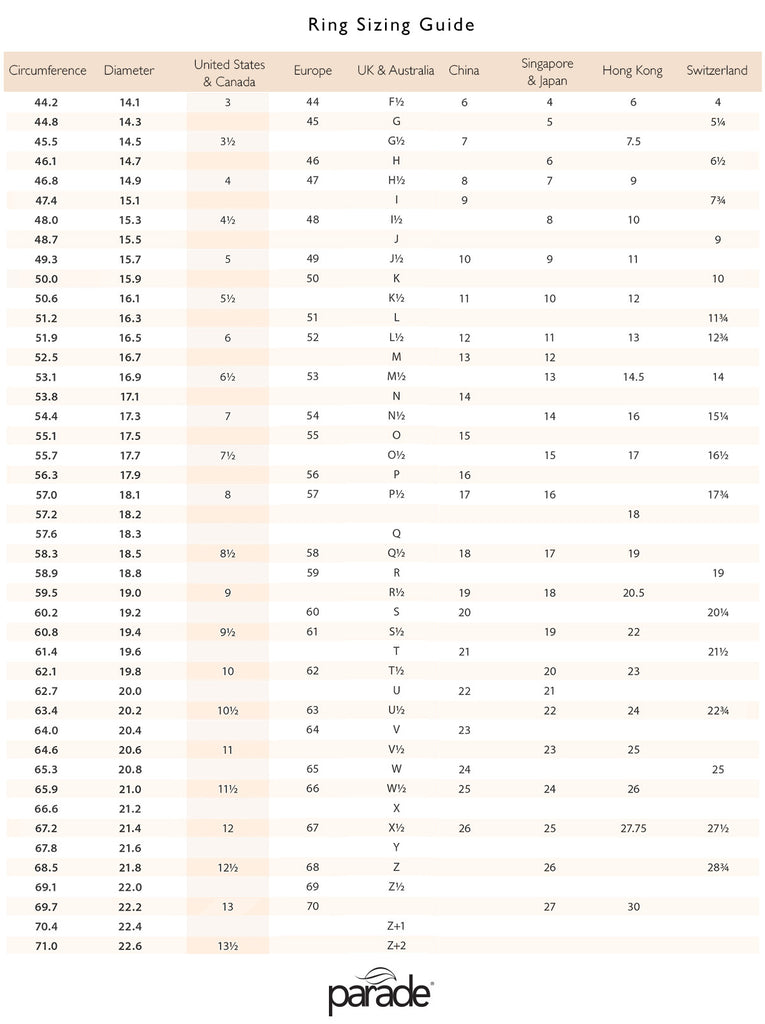Recent Articles
-
Diamond Initial Jewelry: The Perfect Gift May 10, 2023
-
Diamonds Bracelets in David's House of Diamonds at a Glance May 03, 2023
-
Your Go-to Guide for Different Ring Setting Styles and Types March 24, 2023
How to Choose the Perfect Diamond
Whether you are buying a diamond ring to propose to your special someone or you are treating yourself to something sparkly, only the perfect diamond will do. When you make the right choice, it'll keep you smiling for years.
To standardize how diamonds are judged, the Gemological Institute of America (GIA) created the International Diamond Grading System. The system is based on color, clarity, cut, and carat weight: the 4Cs.
When you know what you want in these four areas, it will be really easy to work with a jeweler and find the perfect diamond! Let's take a closer look at each of the categories.
Color
The purest diamonds are always colorless. This allows them to reflect light in an uninterrupted manner and will ensure that the diamond provides the perfect sparkle. The GIA scale for color runs from D to Z, with D being the best. Most jewelry pieces will include a diamond that sits in the range of D to J.
Diamonds rated D-F are deemed colorless while G-J are near colorless. K-M is considered faint, and N-R are very light. These distinctions might be indistinguishable to the untrained, naked eye, but they will affect the value of the diamond.
Clarity
Clarity is another key feature when comparing diamonds. It ultimately indicates the condition of the diamond, telling buyers whether blemishes or inclusions are present. Blemishes are external flaws, while inclusions are internal ones.
Not all blemishes and inclusions have the same impact. The location and size impact whether or not the blemishes and/ or inclusions are visible to the naked eye.
Many of these flaws might be invisible until you view the diamond under a microscope or a loupe. So while a slightly damaged diamond can retain its natural beauty, the very best diamonds are in perfect condition. This is one of the key points that could help you to get a good deal on a diamond.
Cut
A diamond's cut will impact the shape and overall appearance of the diamond. There are many different styles of diamond cuts, and the GIA rating is based on the quality of the cut and how well it makes the diamond shine.
There are five ratings: Excellent, Very Good, Good, Fair, and Poor. The rating is determined by a number of factors, including proportion, angles, brilliance, symmetry, fire, scintillation, and finish. It’s all about interaction with light.
Ultimately, when the cut of a diamond is matched to your personal preferences, it will set the foundation for finding the perfect diamond.
Carat
The measurement of “carat” is one of the best-known barometers for judging various types of jewelry, not just diamonds. In relation to diamonds, it's probably not as important as the cut or clarity, and certainly doesn't carry the equivalent value when weighing gold. Nonetheless, it is a factor that deserves some attention.
The term “carat” relates to the weight of the diamond. One carat is equal to 200mg and can be divided into 100 points. As such, two diamonds with the same carat value could be very different due to the other factors of their appearance that we’ve already discussed.
However, carat weight does This is why you probably want to look at other characteristics of a diamond first, although the diamond weight can have a large impact on the price of a diamond.
Remember the 4Cs
Each of the 4Cs will work in conjunction to decide the overall appearance and quality of the diamond. When you go shopping for the perfect diamond, having a knowledge of these four factors will help you to communicate with jewelers and understand exactly what you’re buying.
Everyone has their own style preferences and budget constraints, and we want to help you find the perfect gem. We offer consultations, in-store and online shopping, and all our jewelry is listed at wholesale prices! So get in touch with us today.
The diamond of your dreams awaits.
